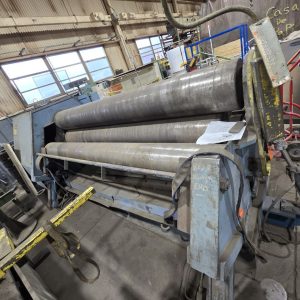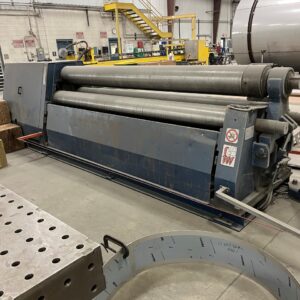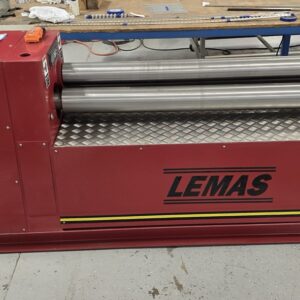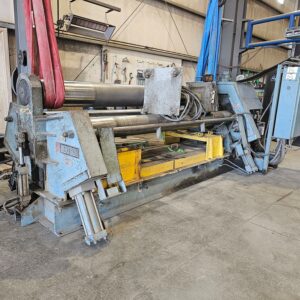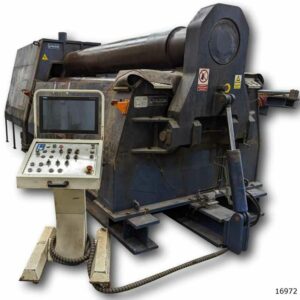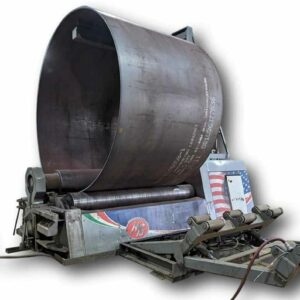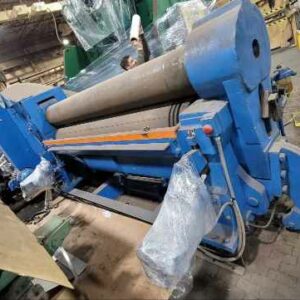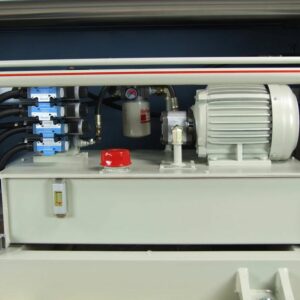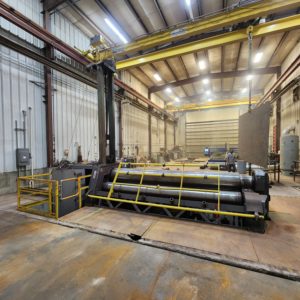Plate Rolls
Used Plate Rolling Machines for Sale
Find the ideal plate roller for your production floor at Revelation Machinery. Our regularly updated inventory of plate rollers for sale includes top brands like Davi, B&K, Bertsch, and much more. If you can’t find a specific make/model, please contact us for assistance.
If you’d like to sell your used plate rolls, we can help with that, too! Find the right buyer and get the best possible prices with Revelation Machinery.
Found Results
Plate Rolling Basics
Plate rolling is a metal fabrication process where metal is thinned by passing it through a pair of rolls. This process can be performed in two ways:
- Hot Rolling: The metal is heated above its recrystallization temperature (using external heat) before rolling.
- Cold Rolling: The metal is rolled at or near room temperature, below its recrystallization temperature. This method saves energy as it doesn’t require heating the material.
A basic plate rolling machine for sale consists of four main parts:
- Entry Section: Where the initial workpiece is loaded.
- Station Rollers: These progressively bend the material as it passes through them.
- Cut-Off Press: Cuts the formed material to the desired length.
- Exit Station: Where the finished piece exits the machine and is moved for further processing or packaging.
Several specialized rolling processes exist, including:
- Controlled rolling
- Roll forming
- Profile rolling
- Roll bending
- Ring rolling
Picking a Plate Roller
Two common types of plate rollers for sale include:
- Four-Roll: Fastest and most accurate, securing the plate between top and bottom rolls. These rollers eliminate the need to flip or reposition the material after pre-bending, allowing for continuous forming.
- They may require a pit for installation as the material is loaded parallel to the floor.
- Three-Roll: These plate rolling machines for sale are ideal for medium to thick materials. The upper roll moves vertically, and the lower rolls move horizontally.
- Three-roll, double-pinch machines also do not require anyone to flip the material after pre-bending.
These plate rolls may work with several different materials, with each affecting the machine’s performance differently.
Crowning is used to help adjust the rollers to correct any kind of deviation from the plane. If you do not have sufficient crowning, you may end up with unsatisfactory workpieces. With all things being equal, optimal crowning is 75% of nominal capacity.
Top Equipment, Top Brands
Revelation Machinery’s inventory covers virtually everything a business might need for fabrication. Other than the plate rolling machines for sale here, our inventory also includes presses, shears, lasers, and more. Contact us for further assistance, or, sell your used fabrication equipment with our nationwide network today.

